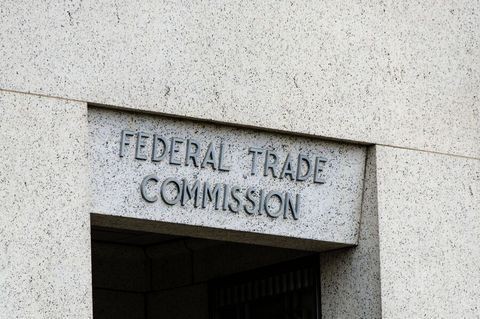EPA’s Busy April for CERCLA and PFAS:
New CERCLA Authority, an Enforcement Escape Hatch, and the Continued Search for Viable Cleanup Technologies
What You Need to Know
Key takeaway #1
In connection with EPA’s final rule listing two PFAS as hazardous substances under CERCLA, EPA also released policy guidance addressing its enforcement discretion under the new rule.
Key takeaway #2
EPA plans to focus its enforcement efforts on those entities that have played a significant role in releasing or exacerbating the spread of PFAS into the environment, calling them “major PRPs.”
Key takeaway #3
Generally, EPA does not intend to pursue enforcement actions against state and local agencies, among other government entities, that manage and/or treat groundwater or wastewater.
Key takeaway #4
Data gaps and technology uncertainties for responding to PFAS contamination pose major challenges to EPA’s enforcement efforts.
Client Alert | 4 min read | 05.08.24
On April 19, 2024, EPA signed the highly anticipated final rule designating two types of PFAS as hazardous substances under section 102(a) of the Comprehensive Environmental Response, Compensation, and Liability Act (“CERCLA”). At the same time, David M. Uhlmann, Assistant Administrator for Enforcement and Compliance Assurance of the EPA, released an enforcement policy memorandum that provides “direction to all EPA enforcement and compliance staff about how EPA will exercise its enforcement discretion under CERCLA in matters involving PFAS, just as EPA exercises enforcement discretion regarding other hazardous substances.” This alert summarizes key points from the enforcement policy and flags various uncertainties that lie ahead.
PFAS
PFAS, or per-and polyfluoroalkyl substances, are a large group of manufactured chemicals. With its final rule, EPA designated two types of PFAS, perfluorooctanoic acid (“PFOA”) and perfluorooctanesulfonic acid (“PFOS”), as hazardous substances under CERCLA.
PFAS have been found in, or have been used in making, consumer products such as carpets, clothing, fabrics for furniture, packaging for food, and cookware. PFAS also have been components of firefighting foams used to extinguish liquid fuel fires at airfields, refineries, military bases and other locations, and in several industrial processes.
EPA has three areas of focus to address PFAS contamination: research to better understand PFAS exposures and toxicity, restrictions to prevent PFAS from entering the environment, and remediation to broaden and accelerate the cleanup of PFAS.
PFAS Enforcement Discretion and Settlement Policy
The PFAS Enforcement Discretion and Settlement Policy (the “Policy”) lays out how EPA plans to exercise its CERCLA enforcement discretion. EPA plans to target its enforcement at parties who have played a significant role in releasing or exacerbating the spread of PFAS into the environment. EPA categorizes “major potentially responsible parties” or “major PRPs” as those parties who manufactured PFAS or used PFAS in the manufacturing process, and other industrial parties. EPA also intends to pursue federal agencies or federal facilities when they are responsible for PFAS contamination.
Enforcement Exempt Parties
EPA does not intend to pursue CERCLA enforcement for PFAS contamination against certain parties, including:
- Community water systems and publicly owned treatment works,
- Municipal separate storm sewer systems,
- Publicly owned/operated municipal solid waste landfills,
- Publicly owned airports and local fire departments, and
- Farms where biosolids are applied to the land.
EPA suggests that its reasoning for not pursuing PFAS response actions against these parties is because they “do not manufacture PFAS nor do they use PFAS as part of an industrial process.”
EPA will also exercise its enforcement discretion to not pursue additional entities for PFAS response actions or costs, informed by the totality of certain factors including:
- Whether the entity is state, local, or Tribal government,
- Whether the entity performs a public service role managing, handling, treating, or disposing of drinking water, solid waste, stormwater, wastewater, pollution control residuals, or performing emergency fire suppression services,
- Whether the entity manufactured PFAS or used PFAS as part of an industrial process, and
- Whether, and to what degree, the entity is actively involved in the use, storage, treatment, transport, or disposal of PFAS.
Protecting Parties Through Settlements
EPA also articulated how it will work to protect enforcement exempt parties from the risks and burdens of third party CERCLA litigation through available settlement tools.
First, EPA indicated it could protect those parties when the EPA enters settlement agreements with major PRPs, by requiring the settling parties to waive their rights to sue or pursue contribution from non-settling parties to that settlement.
Second, EPA repeated its widely known tool of contribution protection for those parties who enter into settlement agreements with EPA for PFAS response actions, signaling that while it may not actively pursue enforcement against certain categories of parties, it is willing to enter into settlement agreements with them to provide protection from CERCLA litigation pursued by others.
Limits & Exceptions
To no surprise, the Policy has limits. EPA made clear that it reserves its right to pursue enforcement against any party that may have contributed to PFAS contamination, particularly where EPA finds a potential imminent and substantial endangerment.
Next, important for all to note, the Policy does not exempt parties from reporting PFAS releases under CERCLA.
Finally, the Policy does not affect the scope of CERCLA liability or responsibility of federal agencies, so the federal government remains a PRP or contribution litigation defendant candidate regarding PFAS releases.
Data Gaps in PFAS Destruction Technologies
While EPA speaks clearly on who will and will not be pursued for CERCLA response to PFAS contamination, it is still searching for data and answers on viable remediation and disposal technologies for PFAS. Around ten days before issuing the Policy, EPA updated its PFAS disposal guidance, outlining the limitations of current destruction and disposal technologies and noting the myriad “high-priority data gaps that need to be addressed.”
For example, EPA continues to urgently seek data related to whether thermal destruction eliminates PFAS, and at what levels the compounds in PFAS are present after the process. The agency is also exploring various emerging PFAS-destruction technologies, and provided a “technology evaluation framework,” while at the same time calling on “technology developers to generate and publicly release data that can be used to complete the framework.”
In short, uncertainties abound on how PFAS will be addressed in a CERCLA response action, posing new challenges to those “major PRPs” that EPA will prioritize and target in its CERCLA enforcement efforts. EPA has identified the “who” in a CERCLA action without clear answers on the “how” of the cleanup itself, requiring both rigor and creativity in the enforcement defense strategies that lie ahead.
Contacts
Insights
Client Alert | 1 min read | 01.20.26
FTC Announces Annual Update to HSR and Section 8 Thresholds
The Federal Trade Commission (FTC) has announced its annual updates to the thresholds and filing fees related to the Hart-Scott-Rodino Antitrust Improvements Act of 1976 (the HSR Act). These dollar thresholds are indexed annually based on changes in the U.S. gross national product and the Consumer Price Index.
Client Alert | 6 min read | 01.16.26
Trump Administration Rolls Out New DOJ Division for National Fraud Enforcement
Client Alert | 4 min read | 01.15.26
Access to Public Domain Documents Pilot: Practice Direction 51ZH
Client Alert | 4 min read | 01.14.26






